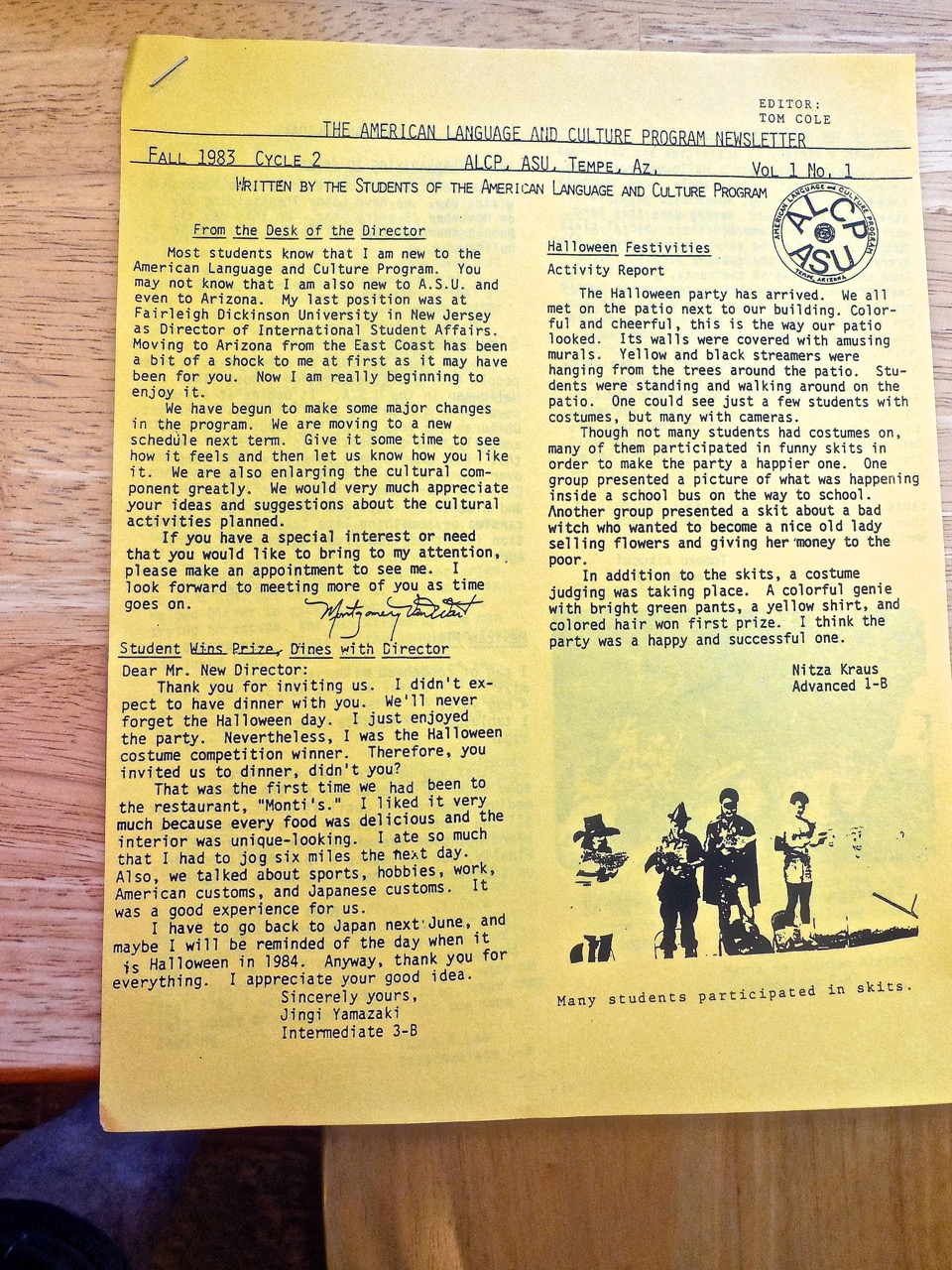JINGI YAMAZAKI
SUNDAY, NOVEMBER 9, 1986 THE ARIZONA REPUBLIC S35
Gardening enthusiasts in Japan place heavy
emphasis on water lusinnass re ran mm ;fi r I:
Gardening for fun ran m v WOT We visited a
nursery, where I marveled at the profusion of
bonsai trees. Many tiny apple trees had quantities
of fruit. Jingi bought two plum trees and two kiwi
vines to plant. We went to another garden spot he
owned to plant them. It was a spot of about 50
feet by 50 feet in an open field. I was amazed at
his planting technique. From a pile of good
topsoil, he pitched a few shovels of soil into a
pile on the rather hard ground. Then he nestled a
plum tree into this loose dirt a bit and covered
the root area with more soil. The roots had been
balled, wrapped with rice straw and tied tightly.
This entire ball was covered with soil, which was
tamped down and mulched with plant material, then
more soil was applied. Next, a bamboo tripod was
constructed with branches tied securely to it so
that the plant couldn't move. Jingi said that if
the plant could jiggle, it would be much slower to
grow. The planting technique beat digging a big
hole, the way we do, but Jingi admitted that it
would not work in Arizona, given its irrigation
needs. Vic Miller is a former professor of
agriculture at Arizona State By VIC MILLER Special
for The Republic Japanese gardens are famous, but
Japanese gardening entails far more than the
scenic gardens. I recently spent some time in
Japan investigating horticultural activities and
getting better acquainted with two grandchildren.
Jingi Yamazaki lives in Hamak-ita, near the larger
city of Hama-matsu. He first came to the United
States in 1980 to display some of his prize
chrysanthemums in a national show being held in
Phoenix. Later, he came to Arizona State
University for 18 months of study. He invited me
to stay with him in Japan and see what Japanese
horticulture is like. Our first stop in that area
was at the Hamamatsu City Flower Park, an 80-acre
park with outdoor plant collections as well as
tropical greenhouses. The first striking feature
facing us from across a lake with fountains was a
rollicking baby panda done in Alternanthera
plants. Three different poses were depicted along
the bank with 6,000 plants used in each one. Two
cultivars with contrasting leaf colors were
planted for the pictures. As Jingi, his wife,
Yukari, and I started our tour, we were fortunate
to be joined by Mitsuhiro Kamo, the guide for
foreign visitors. He was a delightfully
knowledgeable host and presented me with a
72-page list of the plant collections there. We
wandered around the iris gardens with their 700
varieties of, naturally, Japanese iris. All such
gardens are enclosed by raised borders so that
they can be flooded for irrigation, like rice
paddies. I finally learned that this is more
cosmetic than functional. Although plants do need
water at times, they certainly don't need such
flooding. Yet, the visitors like to see flowers
reflected in the water and like the association.
The garden is especially famous for the broad
wooden bridge that zigzags over the top of the
plants across the beds. This is known as a
yatsuhatchi. Jingi is an avid gardener. The first
night we had, among other more familiar foods,
some rounded vegetables an inch or more in
diameter. These were quite tasty. I learned they
were taro. The next morning, as Jingi and I went
for a walk along a stream through a woods, he led
me up a faint path through the trees. Soon we came
to a clearing. Here was a garden including taro.
|

